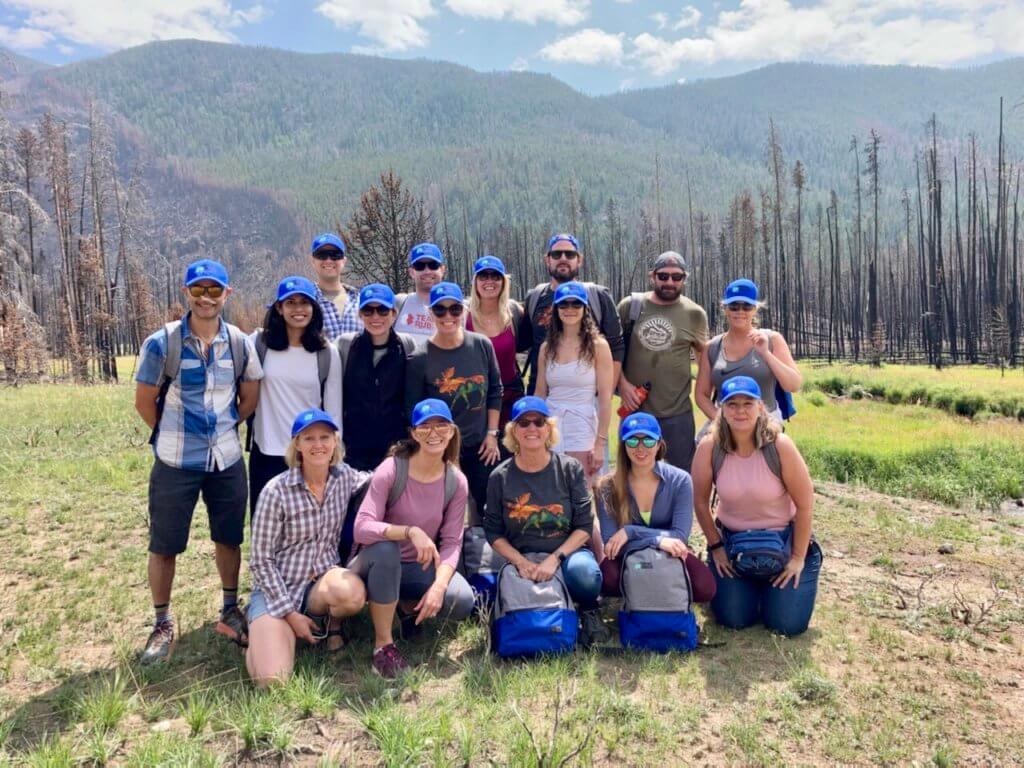Want Doctors to Practice Planetary Health? Teach Advocacy Better. Here’s How…
My journey to climate advocacy started with a three week plastic-free challenge that happened to coincide with the start of my family medicine residency training in 2018. What began as a short-lived attempt to account for and reduce my personal carbon footprint, turned into a substantive journey to learning about the core tenets of preventive medicine. As I learned more about the global plastic problem and built climate friendly habits in my personal life, I was appalled to learn about the full scope of the ongoing environmental health crisis. Climate change is a public health emergency. The more I learned, the more I recognized the real life health impacts of climate change every day in the exam room. From patients suffering from heat stress and air pollution to managing the complexities of refugee and migrant health, fingerprints of climate change were everywhere. At the same time, I was alarmed and frustrated to learn that the healthcare industry’s carbon footprint itself is estimated to be a staggering 10% of global greenhouse emissions. How could I be part of the cure, rather than part of the clean-up crew?
As a busy resident physician, I wasn’t sure how to best use my voice to educate my colleagues, patients, or community about this growing health threat. I couldn’t begin to imagine how I could take action at a scale that would make a difference. Like many people learning about climate change, the problem felt too big for me to tackle alone. Thankfully, my final year of residency included advocacy training that was incorporated into our curriculum. The training included a 1-day workshop led by a local non-profit, non-partisan health advocacy group; a meeting with a state representative who shared insights on how to advocate; and lastly, a requirement that I demonstrate competency in advocacy.
Embedded in these experiences were invaluable lessons: how to engage with other health advocates and organizations, how to contact elected officials, how to testify at a legislative hearing and, most importantly, lots of practice and helpful tips on how to communicate effectively with decision makers. The lesson that resonated most significantly for me was to lean into sharing narratives and stories about my patients, rather than just statistics. By keeping my advocacy personal and local, I was able to effortlessly share what I know as a community and family physician and an expert in human health. With these new skills in hand, I confidently testified a few weeks later at a state senate hearing to advocate for science-based emissions reduction goals for New Hampshire. This was a formative experience that taught me how to practice climate-informed medicine in and outside the exam room, and ultimately led me to pursue a fellowship in Climate Science and Health Policy at the University of Colorado.


The American Medical Association and other similar organizations have already outlined expectations for advocacy as a professional responsibility for physicians. Despite this, many medical schools and training programs provide minimal advocacy training or practice. My experience demonstrates that deeper learning in this skill set can be offered in an accessible and effective way, with powerful consequences. For other schools and programs looking to put advocacy training into practice, some helpful action items are:
- Find your friends: Faculty can easily educate themselves on how to teach advocacy by partnering with local, non-partisan health and advocacy groups. A great first step is to reach out to the advocacy director of your local medical society and use them as a resource. Also available are online resources such as the Society of Teachers of Family Medicine’s free Advocacy Course, and the Climate for Health Ambassadors Training Program.
- Make time: Provide protected time in student and resident schedules and curricula to complete advocacy training. This cannot and should not be an elective experience.
- Make it relevant: Create opportunities for students and residents to meet and engage with public decision makers and learn about health policy. Health professionals are some of the most trusted voices for information on climate change and many other health issues that touch families personally. It’s important that students across health disciplines understand the power of their voice with decision makers.
- Practice makes a difference: Ask learners to demonstrate competence in being physician advocates, whether that involves writing an op-ed, submitting written or oral testimony at a legislative hearing, speaking at a local radio station, or some other relevant activity.
Climate change offers healthcare providers “the greatest opportunity to redefine the social and environmental determinants of health” in the 21st century. Medical schools and graduate medical education programs can empower physicians to take this on by ensuring their curricula include robust, structured and practical advocacy training. There is no time like the present.
Dr. Bhargavi Chekuri is a practicing family physician based in Washington D.C and a National Climate & Health Science Policy Fellow at the University of Colorado School of Medicine, a partner of Climate for Health. She completed her residency training at the New Hampshire Dartmouth Family Medicine Residency Program.
[…] blog originally appeared on the Climate for Health website, here. You can subscribe to receive Climate for Health updates straight to your […]
[…] blog originally appeared on the Climate for Health website, here. You can subscribe to receive Climate for Health updates straight to your […]